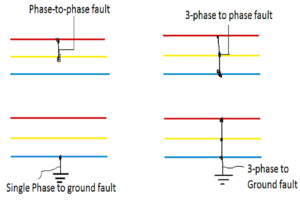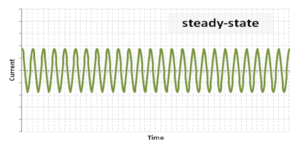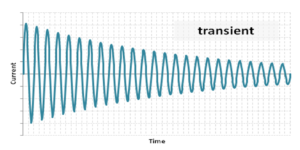Short circuit is a fault in the electrical system when there is a short circuit or discharge between the energized phases or the ground system caused by insulation deterioration, sudden voltage increase, overloaded equipment, loose connection causing overheating of the equipment, humidity in the operating environment, human error during installation, maintenance and operation of the equipment, etc. Short circuit creates sudden current increase, strong electromagnetic force and high heat causing damage or complete destruction of the equipment, fire risk and danger to the operator, especially power supply interruption. Short circuit analysis is to perform calculations to estimate the magnitude of short circuit currents such as 3-phase short circuit, phase-to-ground short circuit, two-phase short circuit, two-phase-to-ground short circuit under different operating conditions and scenarios to provide information for equipment selection, setting thresholds for protective equipment and arc energy analysis for operator protection.
♦ Short circuit analysis is required in the design of new and existing electrical systems. In the design of new systems, short circuit analysis is used to determine the rating of equipment such as busbars, cables, transformers, and protective devices. For existing systems, the results of short circuit analysis are used to verify the rating of equipment and the ability of the equipment to withstand short circuit current. The following are the objectives of short circuit analysis:

– Determine the magnitude of short circuit currents such as 3-phase short circuit, phase-to-ground short circuit, two-phase short circuit, two-phase-to-ground short circuit.
– Determine the largest and smallest short circuit currents of the power system.
– Determine the peak short circuit current, rated breaking current, symmetrical short circuit current, asymmetrical short circuit current, heat.
– Check the short circuit breaking capacity of the protection device
– Check the large mechanical resistance of the device caused by the maximum short circuit current and check the ability to withstand thermal stress of the device based on the values I^2t
– Calculate the size and rating of the device.
– Analyze the distributed power sources that can be connected and the impacts on the existing power system.


♦ In addition, when performing short circuit analysis, information is provided for the following purposes:
– Providing information and setting points for overcurrent, overload, low voltage, overvoltage protection devices, etc.
– Providing information for calculating and analyzing arc energy to perform hazard warnings and selecting personal protective equipment to protect operators
– Planning for future load and power generation development.
♦ Applicable standards
– ANSI/IEEE C37&UL489 Standard for Short Circuit Calculations
– IEC 60909-0 Standard for Short Circuit Calculations
– IEEE 63163-1 Standard for Short Circuit Calculations
– IEEE 3002.2 Standard for Short Circuit Analysis of Industrial and Commercial Electrical Systems.

